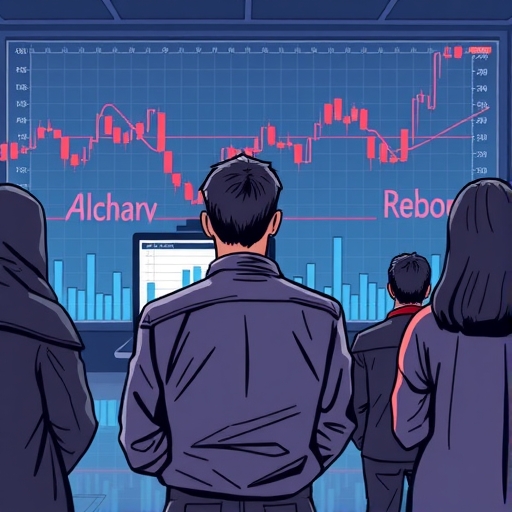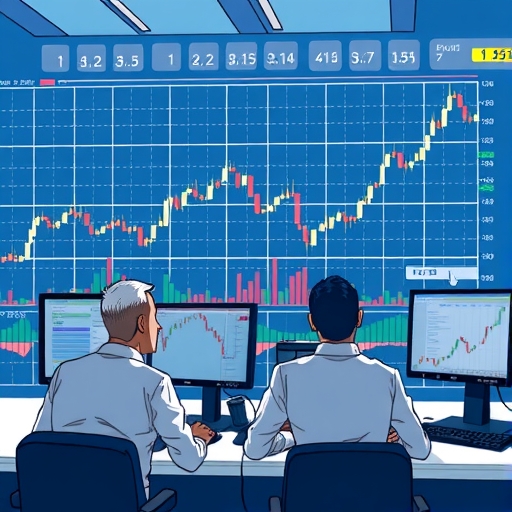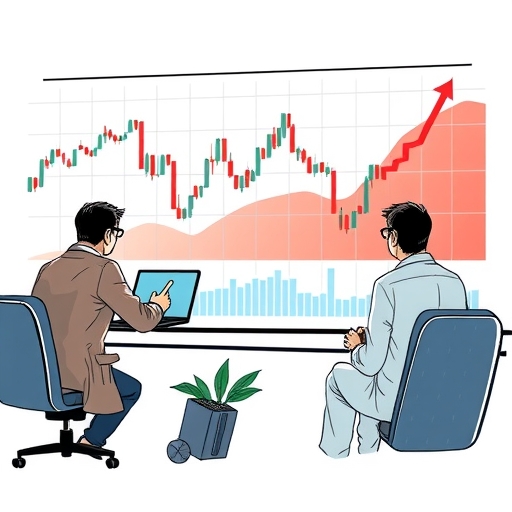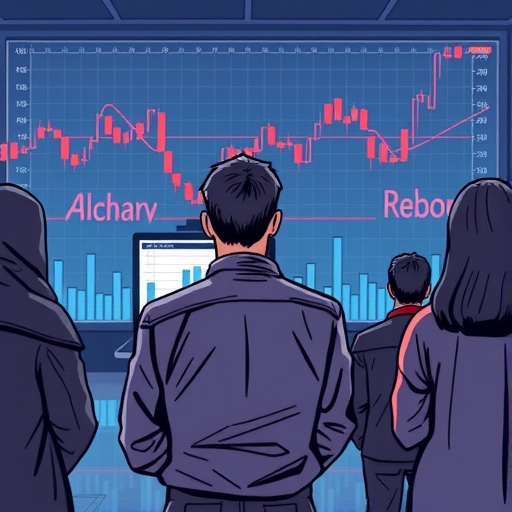Welcome to our in-depth exploration of a fascinating, yet often misunderstood, concept in the world of forex trading: psychological levels. As traders, we often focus on technical indicators, fundamental data, and complex chart patterns. But what if we told you there are powerful price points in the market that are significant not because of inherent value, but because of how we, as collective participants, perceive and react to them? These are the psychological levels, and understanding them is crucial for gaining a more holistic view of market dynamics.
Think of the market as a vast ocean influenced by countless currents – some driven by economic fundamentals, others by sheer human behavior. Psychological levels are like prominent landmarks on this ocean floor that everyone tends to notice and gravitate towards. They are points where collective memory, historical price action, and anticipation converge, often leading to predictable, or at least observable, shifts in sentiment and order flow. For new traders, they provide a framework for understanding key support and resistance areas influenced by factors beyond standard technical analysis. For seasoned traders, they offer another layer of confirmation and insight into potential turning points or consolidation zones.
Throughout this guide, we will delve into what psychological levels truly are, where they come from, how they interact with other market forces, and most importantly, how you can potentially leverage this understanding in your trading strategies. Are you ready to look beyond the raw numbers and see the market through the lens of collective psychology?

At its core, a psychological level is a price point in the financial markets that holds significance primarily due to the collective perception and behavior of traders, rather than strictly fundamental value or traditional technical analysis alone. They are levels that traders easily remember, talk about, and crucially, place orders around.
While the term can apply to any asset, in forex trading, these levels are particularly potent due to the decentralized nature of the market and the sheer volume of participants. The most common manifestation of a psychological level is a round number. Consider currency pairs like EUR/USD, USD/JPY, or even commodities like Gold. Prices like 1.2000 for EUR/USD, 150.00 for USD/JPY, or $2,000 for Gold stick in our minds. Why?
Part of the reason is simple human bias. We think in round numbers. When discussing prices, we often round them off. This inherent tendency translates into trading behavior. Large numbers of individual traders and even institutional participants tend to place buy or sell orders, set stop losses, or determine take profit targets at or very near these easily remembered round figures.
But it’s not just about ease of memory. These levels become significant because their prominence attracts collective attention. As more traders focus on a round number like EUR/USD 1.2000, anticipating a potential reaction there, their combined actions can create a self-fulfilling prophecy. The presence of a large number of pending orders around this level can indeed cause price to pause, consolidate, reverse, or experience increased volatility as those orders are triggered.
Therefore, while not based on intrinsic value, psychological levels are very much based on real market forces: market history, collective memory, anticipated trader behavior, and the actual clustering of buy and sell orders. Understanding this behavioral basis is key to recognizing their potential impact.
While round numbers are the most recognizable form, psychological levels manifest in several ways, each with its own characteristics and impact:
- Round Numbers: As we discussed, these are the most straightforward. In forex, they often end in .0000 or .00 (for pairs like USD/JPY or exotic crosses). Examples include EUR/USD 1.1500, GBP/USD 1.3000, USD/JPY 150.00, AUD/USD 0.7000. These are clean, memorable numbers that act as clear mental anchors for traders.
- Semi-Round Numbers: Levels ending in .5000 or .50 can also carry psychological weight, though often less than the full round numbers. Think of EUR/USD 1.1550 or USD/JPY 150.50. While perhaps not attracting quite as much attention as the whole numbers, they can still function as temporary barriers or points of interest due to their relative simplicity.
- Social Consensus Levels: These are levels that gain significance over time due to repeated market reactions, widespread media focus, analyst commentary, and sustained institutional attention. They might or might not be exactly round numbers, but they become widely accepted as important thresholds. For example, EUR/USD 1.2000 has frequently served as a major psychological and technical hurdle over the years, reinforced by countless market discussions and past price reactions. These levels are self-reinforcing – the more traders treat them as important, the more likely they are to act as important levels in the future.
- Event-Driven Levels: Some psychological levels are etched into market memory by major historical events or critical market decisions. The price reached during a financial crisis, a significant policy announcement (like a central bank intervention), or a key political event (like the Brexit referendum low) can become a psychological anchor for market participants, even if the level itself is not a perfectly round number. For example, a specific low point hit during the 2008 financial crisis or a high reached just before a central bank drastically changed policy can retain significance as a level where major stress or pivotal decisions occurred. These levels often represent points where a large number of traders were forced to make difficult decisions (exit positions, add to losers, etc.), leaving a psychological imprint.
We can also categorize these levels by their perceived strength:
- Major Psychological Levels: These are typically the ‘cleanest’ round numbers (ending .0000 or .00, and sometimes .5000 or .50 for certain pairs/assets), especially those that have held historical significance. They attract the largest clusters of orders and are often highlighted by financial media. Reactions at these levels can be powerful, potentially leading to significant reversals or strong breakouts. Think of USD/JPY 150.000 or the $100,000 mark for Bitcoin.
- Minor Psychological Levels: These include less prominent round numbers (ending .10, .20, .80, .90, etc.) or semi-round numbers that might cause smaller, temporary reactions like brief pauses or minor retracements. While not typically triggering major trend changes on their own, they can still offer clues about short-term price behavior or act as minor hurdles within a larger trend.
Understanding these different types helps us appreciate the varied impact psychological levels can have on price action. It’s not just about the number itself, but the context and the collective attention it commands.

Perhaps the most common way psychological levels manifest in trading is by acting as support and resistance zones. This isn’t just a coincidence; it’s a direct result of the collective behavior we discussed.
When price approaches a psychological level, say EUR/USD nearing 1.1000, traders who believe this level might hold often place buy orders just above it (anticipating support) or sell orders just below it (anticipating a bounce off resistance). Similarly, traders already in positions might place stop losses just beyond this level, anticipating that a break would invalidate their trade idea.
This concentration of orders – including buy limits, sell limits, buy stops, and sell stops – creates a significant liquidity pool around the psychological level. If the level is acting as potential resistance, a cluster of sell orders will likely be present just below or at the level, along with buy stop orders just above it. If it’s acting as potential support, you’d expect a cluster of buy orders just above or at the level, and sell stop orders just below it.
This creates a dynamic. As price approaches the level, these pending orders become active. If there’s sufficient collective belief and resulting order flow, the level can successfully repel price, confirming it as temporary support or resistance. This isn’t magic; it’s the direct result of a high concentration of traders acting on the belief that the level is important.
This mechanism is often referred to as a self-fulfilling prophecy. The anticipation of a level being significant leads to trading actions that, in turn, make the level significant. It’s a powerful feedback loop driven by human psychology and amplified by the structure of market order flow.
For traders, recognizing that psychological levels frequently align with potential support and resistance areas provides valuable insight. These are not rigid lines, but rather zones where price is likely to experience increased interaction, potentially pausing, consolidating, or reversing. Identifying these zones is a key step in applying psychological levels to your trading.
The concept of psychological levels isn’t just about retail traders thinking in simple numbers. It’s fundamentally linked to the behavior of larger market participants, including institutional traders and banks. This connection is best understood through the order clustering effect.
| Type | Definition | Examples |
|---|---|---|
| Major Psychological Levels | Key levels recognized by all market participants. | EUR/USD 1.3000, USD/JPY 150.00 |
| Minor Psychological Levels | Less important levels that might cause smaller reactions. | EUR/USD 1.2500, GBP/USD 1.3500 |
| Round Numbers | Prices that end in .00 or .0000. | USD/JPY 100.00, Gold $1,800 |
As we’ve noted, both retail and institutional traders naturally gravitate towards placing orders at or around round numbers. For large institutions dealing with enormous positions, simplifying their order placement can be crucial. Instead of precise, complex price points, using round numbers makes it easier to manage large, multi-part orders.
Furthermore, these round numbers attract a significant amount of opposing orders from other market participants. Banks and large institutions need liquidity to fill their massive buy or sell orders without causing excessive market impact. The concentration of retail and smaller institutional stops and limits around psychological levels provides this necessary liquidity.
Imagine a bank needs to sell a large amount of EUR/USD. If there’s a significant psychological resistance level at 1.1000 with a cluster of buy orders below and stop-loss orders above, the bank might strategically push the price up to or slightly beyond this level. As price hits 1.1000, the cluster of sell limit orders at that point becomes active, and if it breaks above, the buy stop orders are triggered (which are essentially market buy orders), creating a pool of buyers that the bank can sell into without drastically tanking the price. This process isn’t about manipulation in a malicious sense (though it can be a grey area), but about efficient execution of large orders by leveraging known areas of concentrated liquidity.
Therefore, psychological levels are not just mental constructs; they are reflections of where actual market participants, including the big players, are likely to congregate their orders. Understanding the order clustering effect provides a deeper rationale for why these levels are so often associated with significant price reactions and increased volatility. It highlights that their influence is rooted in the practical mechanics of order execution in a high-volume market.
While psychological levels are driven by behavioral factors, they are not isolated phenomena. They frequently intersect and interact with traditional technical analysis tools. In fact, the most powerful psychological levels are often those that align with other technical indicators, creating a concept known as confluence.
| Technical Tool | Description |
|---|---|
| Support and Resistance Confirmation | When a psychological number coincides with key technical structures. |
| Chart Patterns | Levels within patterns can align with psychological levels. |
| Fibonacci Levels | Key Fibonacci retracements often align with psychological numbers. |
By combining the behavioral insight of psychological levels with the structural analysis of technical tools, you can identify higher-probability trading opportunities. Look for instances where a psychological level is supported by multiple technical factors. This confluence suggests that a wide range of market participants, using different methods, are all focusing on or reacting to the same price zone, increasing its significance.
Understanding how to integrate these concepts allows you to build a more robust and informed trading plan, moving beyond just recognizing a round number to understanding its deeper potential within the overall market structure.
If you’re actively exploring the world of forex trading and seeking a platform that supports various technical analysis tools like those mentioned, you might find value in considering Moneta Markets. Originating from Australia, they offer a wide array of over 1000 financial instruments and support popular platforms like MT4, MT5, and Pro Trader, catering to both beginners and experienced traders looking to apply these concepts.
Psychological levels, acting as powerful areas of support and resistance, offer several potential trading opportunities. The key is not to assume a specific outcome, but to anticipate potential scenarios and react accordingly based on price action around the level. The three primary scenarios you’ll often see are reversals, breakouts, and false breakouts (or “fakes”).
| Trading Scenario | Description |
|---|---|
| Reversals | Anticipating a bounce at psychological support or resistance. |
| Breakouts | Entering a position when price breaks a psychological level. |
| False Breakouts | Trading the reversal after an initial false breakout. |
Each of these strategies carries risk, and deciding which scenario is most likely at a given psychological level depends heavily on the broader market context, the strength of the trend, and confluence with other technical factors. This brings us to a critical point…
While identifying psychological levels and understanding their potential is a vital first step, it’s utterly crucial to understand that they are not magic lines that guarantee a specific outcome. Price does not *have* to respect a psychological level. Sometimes it blasts straight through. Sometimes the reaction is minimal. The behavior around these levels varies depending on the specific asset, the market conditions (trending vs. ranging, high vs. low volatility), and the specific level itself.
Therefore, you absolutely *must* verify and test how price typically behaves around the psychological levels that are relevant to your trading strategy and the instruments you trade. Relying solely on the concept without empirical evidence is speculative and risky.
How do you verify and test?
- Historical Observation: Look at past price charts. Identify significant round numbers and see how price reacted the last few times it approached them. Did it reverse? Did it break through? Was there a false breakout? Note the market conditions at the time.
- Backtesting: This is a more rigorous approach. Using historical data and trading software (like MetaTrader 4/5’s Strategy Tester or dedicated backtesting platforms), you can simulate trading around specific psychological levels based on defined rules (e.g., “enter a short if price hits a major psychological resistance level and forms a bearish engulfing candle”). Backtesting allows you to see, statistically, how often price reacted as you anticipated, what the average profit/loss was, and the win rate for trades taken at these levels.
- Forward Testing (Demo Trading): Before risking real capital, practice trading psychological levels on a demo account in live market conditions. This helps you refine your entry and exit criteria and get a feel for the real-time price action dynamics around these levels.
Through systematic testing, you build confidence in your understanding of how *your* chosen psychological levels behave under *your* specific trading conditions. This empirical evidence allows you to move beyond the theoretical concept to practical, data-driven application. It helps you understand the nuances – perhaps USD/JPY 150.00 is a strong reversal point in ranging markets but a frequent false breakout level in trending markets. Or maybe EUR/USD 1.0500 acts as strong support only after a significant downtrend.
The process of verification turns a general market observation into a potentially profitable edge specific to your trading plan. Never assume; always test and verify.
Understanding psychological levels also means appreciating their connection to broader market dynamics, particularly market sentiment and order flow. Market sentiment, the overall mood or feeling of traders towards an asset, can significantly influence how price reacts at a psychological level. In a strongly bullish market, a psychological resistance level might be easily breached as positive sentiment overwhelms potential selling pressure. Conversely, in a fearful, risk-off environment, a psychological support level might be broken with ease.
We’ve already touched on order flow and the clustering effect. The actual flow of buy and sell orders arriving at the market is what ultimately determines whether a psychological level holds or breaks. As price nears a psychological level, observing the strength of the buying or selling pressure (through tools like order books or volume analysis, where available and relevant to the market structure) can provide clues about whether the level is likely to hold or fail.
Crucially, trading around psychological levels, like any trading activity, requires diligent risk management. Because reactions at these levels can be volatile and unpredictable (especially the potential for false breakouts), placing appropriate stop losses is non-negotiable. A stop loss placed just beyond the psychological level (allowing for some buffer or ‘wiggle room’) is essential to limit potential losses if the level fails to hold as anticipated.
Similarly, using take profit orders around subsequent psychological levels or other technical targets can help you lock in gains. The volatile nature of price action around these levels means quick reversals are possible, so having a plan for exiting profitable trades is just as important as planning your entry.
By considering market sentiment and the potential implications of order flow around psychological levels, and by always anchoring your trades with solid risk management techniques like stop losses and take profits, you can navigate the potential volatility at these key price points more effectively.
As we briefly noted earlier, distinguishing between major and minor psychological levels is important for setting realistic expectations about their potential impact on price action. It’s like differentiating between a major highway intersection and a small residential street corner – both can affect traffic, but on vastly different scales.
Major Psychological Levels typically end in .0000 or .00 (depending on the pair or asset) and often have historical significance, having caused notable reactions in the past. Think of EUR/USD 1.0000 (parity), USD/JPY 150.00, or GBP/USD 1.2000. These levels attract substantial media attention, are widely discussed by analysts, and likely hold the largest clusters of institutional orders. When price approaches a major psychological level, the potential for a significant reversal or a very strong, sustained breakout is higher. These are levels that can mark turning points in trends or initiate large retracements. Their impact is felt across multiple timeframes, from intraday charts to weekly or monthly perspectives.
Minor Psychological Levels include less prominent round numbers or semi-round numbers like .1000, .2500, .7500, or .9000. For example, EUR/USD 1.0900 or GBP/JPY 185.50. While they still carry *some* psychological weight and may attract smaller clusters of orders, their impact is generally limited. Price might pause or experience a brief, shallow retracement at a minor psychological level, but they are less likely to trigger a major trend reversal. These levels are often more relevant for short-term traders looking for small scalping opportunities or temporary points of resistance/support within a larger move. They can also serve as interim targets or potential spots for minor consolidation.
Recognizing the distinction between these two types helps you manage your expectations and size your trades appropriately. Betting on a major trend reversal at a minor psychological level is likely to be a low-probability trade. Conversely, ignoring a major psychological level just because it doesn’t align perfectly with a single indicator could mean missing a significant market move.
Always consider the ’roundness’ of the number, its historical significance, and the degree of collective attention it receives when assessing the potential impact of a psychological level.
At the heart of psychological levels is the human element – the emotions and cognitive biases that influence trading decisions. Fear and greed, two dominant emotions in trading, play a significant role around these key price points.
As price approaches a psychological resistance level, fear can manifest in traders who are long positions. They might fear a reversal and decide to take profits or place stop losses just below the level. For traders looking to go short, anticipation and greed might kick in, leading them to place sell orders at or near the level, hoping for a bounce downwards.
Conversely, as price drops towards a psychological support level, fear might grip short sellers, prompting them to cover their positions (buy back), while greed might motivate potential buyers to place buy orders at or above the level, anticipating a bounce.
Understanding these psychological drivers is key. It helps explain *why* these levels become self-fulfilling prophecies. While we aim for rational decision-making in trading, we are still human. The collective effect of these emotions and biases, multiplied across millions of market participants, creates a tangible force at psychological levels. Recognizing this human element makes these levels more than just numbers on a chart; it makes them points where market psychology is overtly shaping price action.

Engaging with the market through a reliable platform is essential when navigating these volatile psychological zones. If you’re looking for a trading environment that supports high-speed execution crucial for reacting to sudden moves around key levels, Moneta Markets offers robust platforms like MT4, MT5, and Pro Trader, known for their efficiency and low latency, alongside competitive low spreads, which can be beneficial when trading around anticipated areas of volatility.
In conclusion, psychological levels are a powerful, sentiment-driven phenomenon in the forex market. They are key price points, often but not exclusively round numbers, that gain significance through collective memory, anticipated trader behavior, and concentrated order flow. They act as dynamic zones of potential support and resistance, influenced by both individual and institutional trading decisions.
Understanding psychological levels provides a deeper insight into market mechanics, complementing traditional technical and fundamental analysis. By recognizing the different types of psychological levels – from major round numbers to event-driven anchors – and appreciating their role in facilitating order clustering and influencing market sentiment, you gain a more nuanced perspective on price action.
However, knowledge alone is insufficient. Effective trading around psychological levels demands rigorous application. This means:
- Learning to identify these levels on your charts.
- Seeking confluence by combining psychological levels with other technical analysis tools.
- Developing specific trading strategies for potential reversals, breakouts, and false breakouts around these levels.
- Crucially, dedicating time to verify and test how specific psychological levels behave on the instruments you trade under different market conditions through historical observation, backtesting, and demo trading.
- Always incorporating sound risk management principles, including strategic placement of stop losses and take profits, acknowledging the potential for heightened volatility and unpredictable moves.
Trading psychological levels is not about predicting the future with certainty, but about understanding areas where the market is likely to experience significant interaction due to the collective focus of participants. By integrating this understanding into your trading framework, supported by robust analysis and disciplined risk management, you can unlock valuable insights and potentially improve your trading outcomes. Continue learning, keep testing, and approach the market with both analytical rigor and an awareness of the powerful psychological forces at play.
forex psychological levelsFAQ
Q:What are psychological levels in forex trading?
A:Psychological levels are price points that gain significance due to the collective perception and behavior of traders, often around round numbers.
Q:How can I identify psychological levels?
A:Look for round numbers and levels that have historically caused reactions in price action.
Q:Why do psychological levels matter for traders?
A:They can act as key support and resistance zones where price action may change direction, influenced by collective trader behavior.
